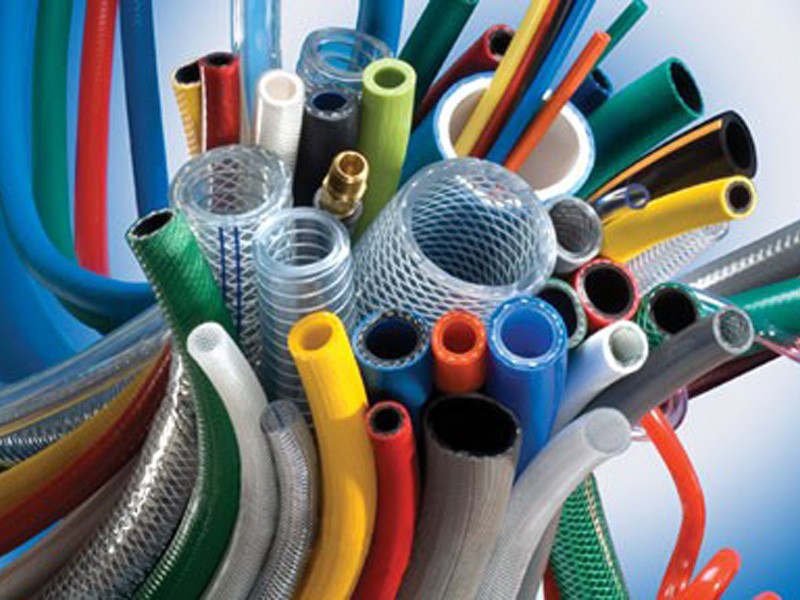Within different industries, there are plenty of different types of hoses, all used for various purposes. There isn’t really such thing as “the best hose”, only a hose that can do its job and do it right. We here at Bryan Hose have possibly every hose you could require to get your job done the most efficient way possible. However, with the variety of hose options available many may be wondering which one to select for their specific application. This article will discuss a few attributes to consider when selecting the proper hydraulic hose.
The “STAMP” Acronym
The “STAMP” acronym is used the help remember the most important hose attributes to consider when selecting a hose. This acronym stands for Size, Temperature, Material and Pressure. Sometimes the acronym “STAMPED” is used. The last two letters stand for Environmental factors and Delivery.
Size
To obtain the proper flow velocity, the hose I.D. must be sized accurately. A flow that is too slow can result in sluggish system performance, while a flow that is too high can cause excessive pressure drops, system damage and leaks.
A system of measurement called Dash Numbers or Dash Sizes is used by the fluid power industry to identify hose and fitting size. The Dash Number is the measure of a hose’s Inner Diameter (I.D.) in sixteenths of an inch.
Check the layline to determine the hose size. If the original printing has worn off, the original hose must be cut and the inside diameter measured. Also, make sure to measure the overall assembly length and fitting orientation before cutting the hose.
Temperature
Media temperature is the temperature of the media conveyed through the hose, while the ambient temperature is the temperature around the hose where it is being used. Both temperatures need to be considered when selecting the proper hose. It is important to ensure that the temperature rating of the hose you are considering meets or exceeds the higher of the media or ambient temperature of your application.
Also, media type along with media temperature should be considered different fluids can increase or decrease the effects of temperature on the hose. This is why Bryan Hose carries different temperature ratings for different fluids. It is always important to check hose specification for temperature ratings.
Application
Before selecting a hose, it is important to keep in mind how the hose assembly will be used. Answering the following questions may help:
- What type of equipment is the hose going to be used on?
- What environmental factors will the hose be exposed to?
- Are mechanical loads applied to the assembly?
- Will the routing be confined?
- Is there a need to use field attachable fittings?
- Will the assembly be subjected to abrasion?
Material
The hose you order must be compatible with the material being conveyed. Compatibility must cover the inner tube, but also the cover, hose fittings and o-rings as well.
Pressure
It is crucial to understand both the system working pressure and any surge pressures and spike. Select a hydraulic hose with the published maximum working pressure equal to or greater than the maximum system pressure, as well as any surge pressures or peak transient pressures in the system.
When selecting components of a hose assembly, the “weakest link” of the assembly must be considered. The hose assembly is rated at the maximum working pressure of its component with the lowest pressure rating.
Specific applications frequently require specific hoses. For instance, applications where hoses will encounter rubbing or abrasive surfaces would best be handled by Bryan Hose’s abrasion-resistant hoses with tough covers. Contact Bryan Hose with the link below for more information!


Bryan Hose & Gasket liked this on Facebook.
Debra Wilson liked this on Facebook.
Charity Wilson liked this on Facebook.
Juan Llanas liked this on Facebook.
Maggie Morgan liked this on Facebook.
Yolanda Lucio liked this on Facebook.
Angel Reaps liked this on Facebook.
Lupita Rodriguez liked this on Facebook.
Mike Williams liked this on Facebook.